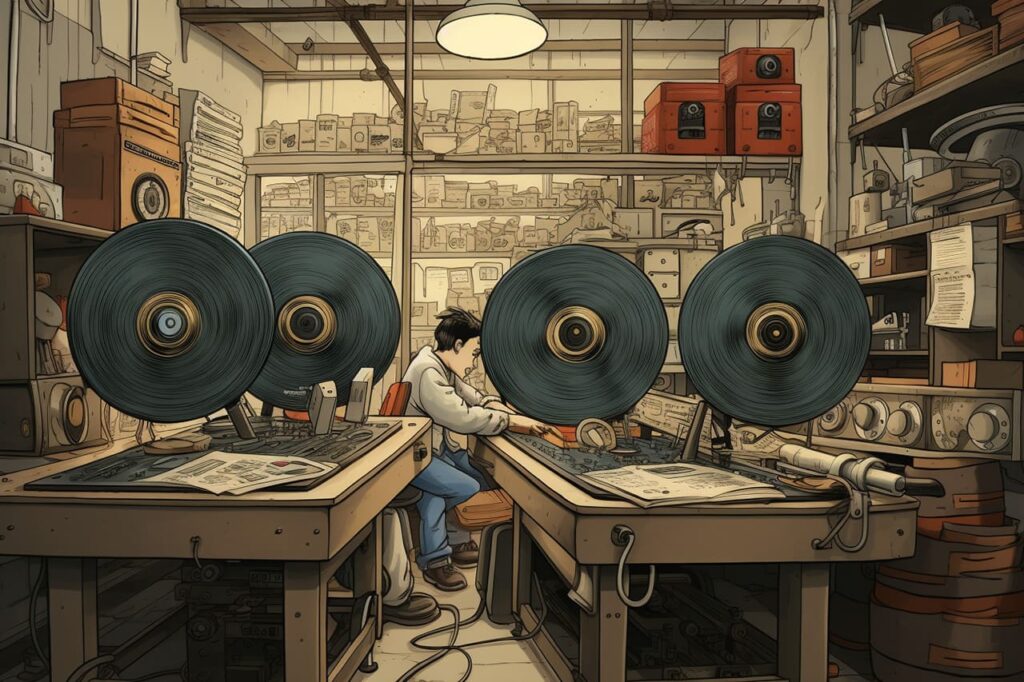Before you dismiss the black disc as a mere relic of the past, consider the vinyl record as the comeback kid in a leather jacket, weathered from battles against the digital tide, speaking in grooves and ridges. It’s an artifact that’s as much a craft of engineering as a vessel of nostalgia, etching memories into its spirals like a time capsule. Let’s peek into the mystery of how vinyl records are made.
Grooves Speak Louder Than Words
It begins with polyvinyl chloride, a substance less poetic in name than in purpose. Here’s the alchemy of sound: granules melted, flattened and transformed into a platter with grooves that can sing. A master disc, copper-plated and shining like the sun, holds the negative image of what will become a chorus of records. It’s a master because it commands the stage, the progenitor of what’s to come.
The Pressing Matter
In the pressing plant, a ballet unfolds. Steam hisses, presses clamp down like the jaws of a beast, and in this mechanical maw, the master’s mirror image is stamped into the black canvas, forging a record in the heat of creation. Here, music takes physical form, emerging from the womb of machinery, ready to spin tales.
The Artisan’s Touch
Even in this age of lasers and lights, the crafting of a record is stubbornly artisanal. It demands a human touch, an attentive ear, and a watchful eye. Every record is a snowflake, unique in its minor imperfections. The stamper – that tireless toiler – eventually wears down, retiring after its symphonic shift, ensuring that no two pressings are ever quite the same.
Spin Doctors and Sound Alchemists
The final product, a vinyl record, is more than a medium. It is the canvas of the spin doctors, the alchemists of sound, who believe in the warmth of analog, the crackle of life embedded in the wax. The turntable needle – the sorcerer’s wand – reads the vinyl’s palm, divining music from the etched lines as if by magic.
Beyond the Turntable
And so, in a culture of clouds and streams, the vinyl record stands defiant, an anchor in the flux. Vinyl is the choice of the audiophile, the hipster, the romantic – it’s the slow food movement of music. In its resurgence, it rebukes the ephemeral, the disposable, the intangible, demanding presence, space, and engagement.
A Resonant Endnote
In the digital age, the vinyl record – that groovy anachronism – is a statement. It’s a choice to engage with music physically, to own a piece of the artist’s soul in a disc. Making a vinyl record is the weaving of a tapestry, each thread a soundwave, each color a note. As the world spins at 33 ⅓ revolutions per minute, the record asks us to listen, not just hear, to connect, not just play. And in that request, there is a resonance beyond music, a call to remember what it means to be genuinely, deeply human.

